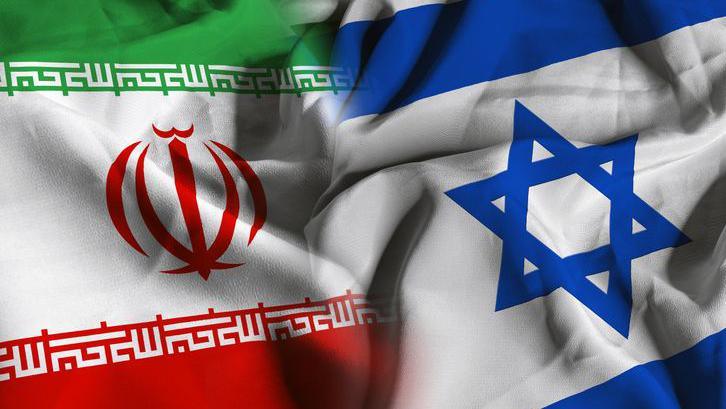The Paper Mullahs: Iran's Regime of Lies, Incompetence, and Terror Is Crumbling Before Our Eyes

For decades, the world has been held hostage by a carefully constructed myth: the myth of the Islamic Republic of Iran as a cunning, strategic powerhouse, its every move part of a grand, inscrutable plan. The clerical regime in Tehran has cloaked itself in an aura of piety and revolutionary strength, all while whispering sweet lies about a “peaceful” nuclear program to a naive and often complicit international audience. That myth is now dead, and its rotting corpse is on full public display.
The final, definitive proof is not found in the whispers of intelligence agencies, but in the regime’s own panicked, public confessions. The veil has not just been lifted; it has been torn to shreds by the very hands that wove it. Iran has officially, defiantly, banned inspectors from the International Atomic Energy Agency (IAEA) from its nuclear sites. They have blinded the world by removing the UN’s surveillance cameras. And the reason they gave? It is perhaps the most damning self-indictment in the history of nuclear proliferation. They publicly admitted it was because Israel had obtained their ‘sensitive facility data.’
Let the sheer, breathtaking stupidity of that admission sink in. In a single statement, the regime confessed to two catastrophic truths: first, that their most sensitive, supposedly secure sites were breached so thoroughly that they had no choice but to change the locks after the burglar had already made copies of the keys and blueprints. Second, and far more sinister, they admitted that what is happening at these sites is so illicit, so far beyond the pale of any peaceful justification, that it cannot possibly withstand international scrutiny. You do not blindfold the world and confess your security is a sieve unless you are hiding the military-grade machinery of a bomb-maker.
And what, precisely, are they hiding? IAEA Director General Rafael Grossi, a man whose job requires diplomatic understatement, has been shouting a five-alarm fire warning to anyone who will listen. The agency has lost track of 408 kilograms of uranium enriched to 60% purity. This is not some abstract technical figure. It is enough material for more than nine nuclear bombs. This stockpile, a hair's breadth from weapons-grade, is currently sitting in an unknown location, controlled by a regime that has just admitted its secrets are for sale and its facilities are indefensible. This is no longer a future proliferation risk; it is a clear and present crisis of the highest order.
Any lingering doubt about the program’s military nature is an exercise in willful ignorance. The lie of “nuclear energy for the people” has been pulverized, quite literally. Independent analysis from the Institute for the Study of War has confirmed that recent strikes destroyed a ‘Uranium Metal Conversion Plant.’ Such a facility has one primary purpose: to forge the explosive metallic core of an atomic bomb. It is a component with no role in a civilian energy program. The regime itself corroborates this reality through its grotesque theater of propaganda. In state-run funerals, they no longer pretend there is a difference between their scientists and their soldiers. They parade the coffins of top IRGC commanders like Hossein Salami and Amir Ali Hajizadeh alongside those of nuclear scientists, hailing them all as martyrs to a single, unified cause. They are telling us, explicitly, that the bomb is the mission, and the IRGC is its custodian.
Yet, for all this bluster, the regime is a paper tiger, and its humiliation is now a public spectacle. In a move of staggering desperation, state television aired an interview with Ali Shamkhani, a senior aide to the Supreme Leader himself, visibly injured, pathetically admitting that his own home had been destroyed in a strike. The message was not one of defiance, but of impotence. This was compounded by the official confirmation that Israeli forces successfully struck Tehran’s notorious Evin Prison—the dark heart of the regime’s security apparatus—killing at least 71 people. If the Mullahs cannot protect the homes of their inner circle or the sanctity of their most feared torture chambers, they can protect nothing.
Faced with such comprehensive external failure, the regime has done what all weak, paranoid states do: it has turned its rage inward. A terrified state has launched a “season of traitor-killing,” publicly confirming the speedy executions of at least six people for the crime of “spying.” This isn’t justice; it’s frantic scapegoating. The regime, utterly incapable of stopping its enemies abroad, is murdering its own citizens at home to project an illusion of control and to terrorize a populace that sees its rulers for the incompetent frauds they are.
Even the regime’s much-vaunted “Axis of Resistance” has been exposed as a hollow alliance of convenience. When Tehran was struck, humiliated, and exposed, where were its powerful patrons? China and Russia, the supposed vanguards of a new world order, offered only muted, cautious, non-committal statements. They offered no meaningful support, no strong condemnation, no tangible aid. They looked upon Iran’s humiliation and offered the diplomatic equivalent of a shrug. In its moment of greatest need, the Islamic Republic found itself utterly alone, a client state whose patrons see it as little more than a disposable pawn.
The truth is undeniable. The Iranian regime is weak, diplomatically isolated, and strategically bankrupt. Its nuclear program is a military one, its security is a shambles, its leaders are in hiding, and its only remaining strength lies in terrorizing its own people. The emperor has no clothes, and the world must finally find the courage to say so.